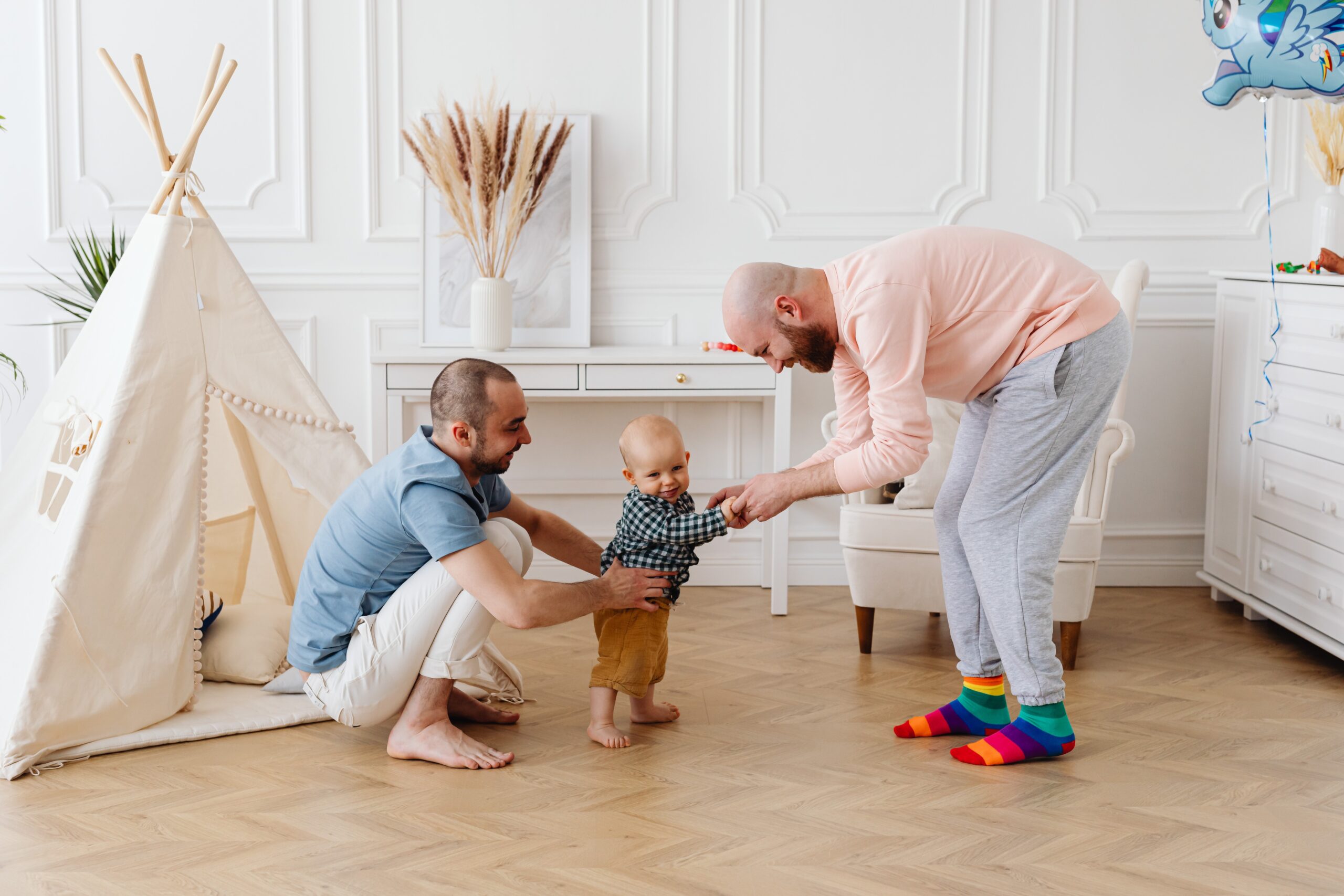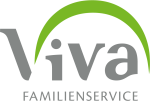Rainbow family – what does it mean?
 Families come in many forms. The most-known variation is the „mother-father-child“ construct, also known as the classic family model. But there are many other forms: Single-parent families, patchwork families, adoptive and foster families and rainbow families. First things first: every kind of family is normal.
Families come in many forms. The most-known variation is the „mother-father-child“ construct, also known as the classic family model. But there are many other forms: Single-parent families, patchwork families, adoptive and foster families and rainbow families. First things first: every kind of family is normal.
What are rainbow families?
Rainbow families are families in which at least one parent is lesbian, gay, bisexual, transgender, queer, intersex, and/or non-binary (LGBTQI). Rainbow families arise because lesbian, gay, bisexual, transgender and intersex people want children and start a family.
Women – who are not together with a biological man – can fulfill their wish to have children, for example, by sperm donation. Men – who are not together with a biological woman – often take in foster children in Germany.
However, father-mother-child families can also become rainbow families. For example, if the father falls in love with a man or if the mother comes out as transgender.
Note: Legally, rainbow families are entitled to the same family benefits as all other families. This includes, for example, maternity protection, parental leave, parental and child benefits.
The most famous prejudice: children need a father and a mother!
Unfortunately, rainbow families and also single parents are repeatedly reproached for the fact that children would need a male and a female caregiver in the family. However, studies of the last decades show that it is not the family structures that are decisive for the development of children, but the processes within the family. This means both quality of relationships between individual family members, as well as a good family climate and a good relationship with those to care for them. The gender of this person(s) does not matter. In any case, children often look for their role models outside the family.
The fact that children from rainbow families develop just as well as other children is proven by a 2009 study commissioned by the Federal Ministry of Justice (in German).
Parenting in a legal context: how does it work?
Legal parenthood, that is, who is legally the mother or father for a child? This can be very complicated and bureaucratic for rainbow families in Germany. There are different solutions for each scenario:
- In the case of same-sex couples, recognition of joint legal parenthood has so far generally only been possible by way of adoption.
- In the case of a lesbian couple, the women who gave birth to the child becomes the mother. Her partner does not currently become a (further) mother either automatically or by way of recognition or judicial determination. However, in order to obtain a legal parental status, the married or partnered (additional) mother can adopt the child.
- Children of gay couples also have a biological mother by whom they were born. The natural father can acknowledge his paternity with her consent or have it established in court. This does not apply to his partner.
- In the case of transgender or intersex persons living in same-sex relationships, it is possible that both partners are biological and legal parents.
- A childbearing gay trans man can have a child with his partner. A lesbian transwoman can either still father children or donate her own sperm, for fertilization. Likewise, intersex persons have the possibility of bodily and legal parenthood.
How do you explain rainbow families & LGBTQI to kids?
In general, every child should grow up with the idea that diversity is normal and beautiful. Diversity should be valued and encouraged from an early age – we as parents must set an example. Because an accepting and appreciative attitude is free of evaluations and judgments of the other person. Existing prejudices and negative stereotyped are thus reduced.
When children are „educated“ about rainbow families, it is important to educate them about diversity. For this purpose, it is helpful to use the rainbow symbol, for example: The rainbow of people consists of my facets. This includes different skin colors and cultures as well as gender identities.
It is important that rainbow families also play a role in everyday life. This can happen in books, for example. On the website „Diverstiy is us“ are many german children’s book that show real family diversity in their stories.
The books „All About Families“ and „Das alles ist Familie“ explain to children what a family is, what it is made of and what it is good for. Those books show the many different forms a family can take and explain that every kind of family is quite normal.
Note: Education is also possible in the daycare center. In the brochure “Murat plays princess, Alex has two mothers and Sophie is now called Ben”, financed by the Berlin Senate, is the first handout in Germany for daycare professionals. Free to download and order!
The better our children are enlightened, the more normal it is to them and also the easier it is for them to find their orientation and to accompany them in the process. After all, who knows if the assigned gender of our children really fits or if our daughter might fall in love with another women?
Where can I get support or advice?
- Regenbogenportal.de: An offer of the Federal Ministry for Family Affairs, Senior Citizens, Women and Youth with many offers and information material in English
- Regenbogenkompetenz.de: Advice for rainbow families in German
- And of course, with us!













